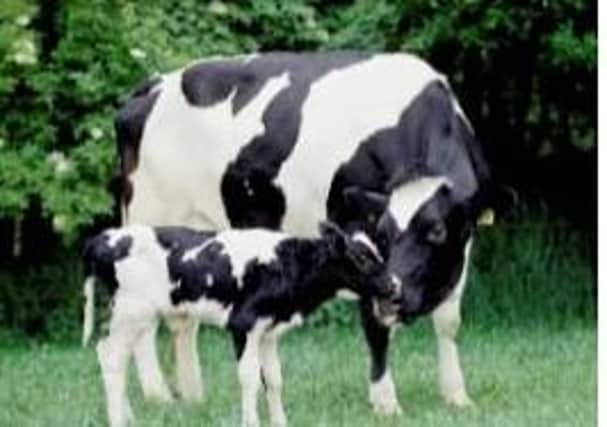BVD vaccination remains vital during Eradication Programme


The latest figures from Animal Health and Welfare Northern Ireland (AHWNI) reveal that the incidence of persistently infected calves being born on NI farms has reduced slowly since the programme became compulsory in 2016. The rolling annual prevalence of BVD has fallen slightly in June 2020 to 0.3% from a level of 0.35% for the same period in the previous year.
However, the overall incidence of BVD has reduced from 0.65% since the programme began. The total number of BVD Persistently Infected (PI) calves born in June this year exceeded 200.
Advertisement
Advertisement
Retained PIs are one of the greatest risks to the success of the eradication programme. There were 167 PI animals alive as of 1 st September. Many herd owners who have kept PIs have seen BVD infection persist into subsequent seasons, to their cost. It must be noted that despite PI removal, BVD virus can continue to circulate in the herd in subsequent years leading to disease therefore vaccination remains important to protect animals from the effects of infection.
Bovine viral diarrhoea virus can infect cattle of all age groups. Infected animals can experience diarrhoea and/or respiratory disease, milk loss as well as suffer from a reduction in immune function. This can result in secondary infections due to the effects of the virus on the immune system. More importantly, if a cow is pregnant at the time of infection, the consequences are greater. Early embryonic loss, abortions and malformations can occur along with the development of persistently infected (PI) calves if the dam is infected during the window of susceptibility. Persistently infected animals shed vast amounts of BVD virus and are the main source of BVD viral infection to others in the herd. PI removal is cornerstone of BVD eradication.
Economically, the cost of BVD infection can amount to as much as £90 per dairy cow per year. The major costs associated with BVDV are as a result of a higher mortality rates due to immunosuppression and secondary infection, premature culling of persistently infected calves, abortion, stillbirths and reduced milk production. Overall, the effect of BVD infection has a major impact on animal performance as well as overall farm profitability.
Identifying PIs and culling them is the first step in reducing the infectious pressure within the herd, followed by measures to prevent the disease entering the herd. Given the difficulty of maintaining biosecurity that is completely effective, on-going vaccination against BVD is essential for many Northern Irish herds to provide ongoing immunity. Carried out correctly – and with heifers this means completing vaccination before they are served - vaccination will help protect cows from the effects of exposure to the BVD virus and significantly reduce the risk of a PI calf being produced.
Advertisement
Advertisement
The importance of vaccination to boost herd protection is further compounded by the fact that as the NI BVD eradication program progresses, there will be fewer PI animals present.
Previously, these animals will have infected some of their naïve cohorts which subsequently developed short term immunity via natural exposure. However, the overall national herd immunity will reduce overtime as this source of natural infection is removed. Therefore, as the compulsory BVD PI removal scheme continues, vaccination will become an even more important tool in providing protection in the face of challenge to avoid PI calf formation.
When deciding on a vaccination schedule, it is important to factor in the stress of animal handling, especially if the dam is pregnant. Choosing a vaccine that is safe during pregnancy has the added advantage in that it can be used to boost herd immunity at any stage of the year.
Bovilis BVD is the only inactivated vaccine licensed for use during pregnancy. As well as this, Bovilis BVD can be used on the same day as Leptavoid-H or mixed in the same syringe with Bovilis IBR Marker Live. Having the option of using more than one vaccine on the same day reduces labour inputs as well as stressful handling time of cattle.
Advertisement
Advertisement
BVD is a costly disease. Vaccination to protect against PI calves forming in the uterus plays a crucial part in reducing the impact of infection. Testing methods facilitate identification of PIs, whether buying in stock or checking the status of your own breeding animals. Alongside good biosecurity protocols and the correct vaccination procedures, ensuring your herd is BVD-free is essential for maximising animal productivity and farm profitability.